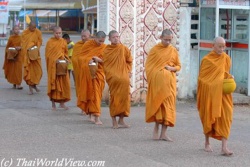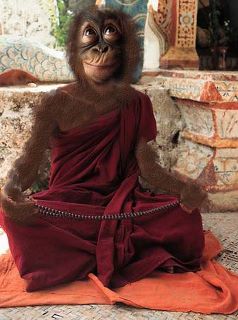Bodhisattvas
The Spiritual Realm of the Bodhisattva:
The Bodhisattva is a higher ideal of spiritual aspiration than that of the Arhat. Whereas the goal of the Arhat was only nirvana (extinction of the asravas1) on the individual level, the goal of the Bodhisattva is Bodhi (enlightenment, or spiritual awakening) of both oneself and others. This is the path to the enlightenment of the whole world (Buddha).
The Bodhisattva understands the extinction of the asravas is not an end itself but part of a greater spiritual reality that transcends one’s own personal liberation. One is not alone - one is part of a spiritual reality that is much greater than oneself. There is both one’s own practice and the influence of others - the two are inseparable if the self is not real in and of itself. The four truths become the springboard for the four vows that are the resolve of the Bodhisattva.
The path of the Bodhisattva begins with what is known as the first inspiration of the awakened mind (Bodhicitta). It is this first inspiration of the Bodhi mind that is the wonderful original cause of enlightenment, causing one to embark on the path of enlightenment and become a Buddha. Each and every cause one makes contributes to the spiritual destiny of the whole world.
The life of Buddha Sakyamuni exemplified this. After attaining enlightenment, He spent the rest of His life teaching and guiding other living beings towards enlightenment.
The virtues of mercy & compassion distinguish the Bodhisattvas from those of the Two Vehicles. The Bodhisattvas defer their own liberation from the threefold realm of mortal existence in Life & Death (Samsara) so that they can help others along the path to spiritual enlightenment.
Whereas those of the Two Vehicles seek to avoid the threefold realm through detachment, the Bodhisattvas have the wisdom to accept the reality of the threefold realm for what it is without being attached to it and use it as part of the vehicle for attaining enlightenment. Therefore, instead of separating themselves from life in this world, the Bodhisattvas become engaged in it to fulfill their purpose for appearing in it.
Whereas those of the Two Vehicles only emphasize the emptiness of all existence, the Bodhisattvas not only understand this emptiness, but they also understand that which is temporary and provisional in this world and how it may be used to give joy and happiness and help guide living beings towards enlightenment. The Bodhisattva is ever on the path of finding the golden mean between the absolute and the mundane that leads to enlightenment.
Whereas those of the Two Vehicles are focused on their own practice, the Bodhisattvas understand that their own practice and the influence of others is an inseparable dynamic. The spiritual realms are constantly penetrating, influencing and transforming each other.
The primary practice of the Bodhisattvas are the Paramitas, the perfections that transport them to 'the other shore' of enlightenment. They are:
Dana - Generosity, Charity, Giving of Oneself
Sila - Morality, Purity of Conduct
Ksanti - Endurance, Forbearance, Patience
Virya - Diligence, Zeal
Dhyana - Meditation, Mental Concentration
Prajna - Spiritual Insight, which is said to include the last four, which are
Upaya - The Ways and Means of Emptiness and Detachment
Pranidhana - Spiritual Vows
Bala - Spiritual Powers
Jnana - Spiritual Wisdom
The Path of the Bodhisattva was described as passing through a succession of stages or ranks from the very first inspiration of the awakened (Bodhi) mind up to the wonderful awaking of the original or eternal Buddha within.
First a quote from The Great Calm-Observation regarding ranks:
"The Scriptures and Discourses of the Great Vehicle all clarify stages and ranks. Those who fear stages and ranks will not enter into any of them. Without avoiding them and without being bound by them, when one has equanimity with respect to the nature of words and designations, there will be liberated understanding. Although we teach of stages and ranks, one must transcend stages and ranks."
The most commonly cited descriptions of progress along the path of the Bodhisattva were The 42 Stages from The Flower Garland Sutra and The Six Identities With Enlightenment, which Chih-I gleaned from The Lotus Sutra.
In The Lotus Sutra, the forty-two stages are the Practice of the Dharma (Spirituality) and are personified by the Provisional Bodhisattvas whereas the Six Identities are the Practice of Faith and are personified by the Four Leaders of the Bodhisattvas that spring forth from the earth.
see also: Bodhisattva
Footnotes:
1. Asravas: The Four Currents of ignorance, sensory desire (for gratification), craving for (self) existence, and attachment to views (opinions)
Source
www.tientai.net [[Category:]Bodhisattva's]


